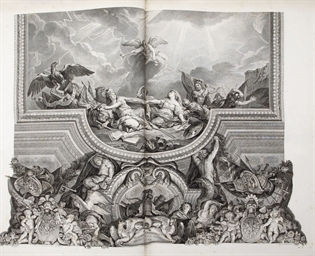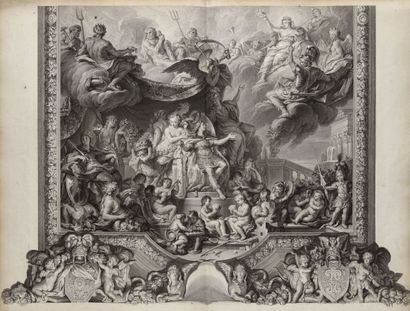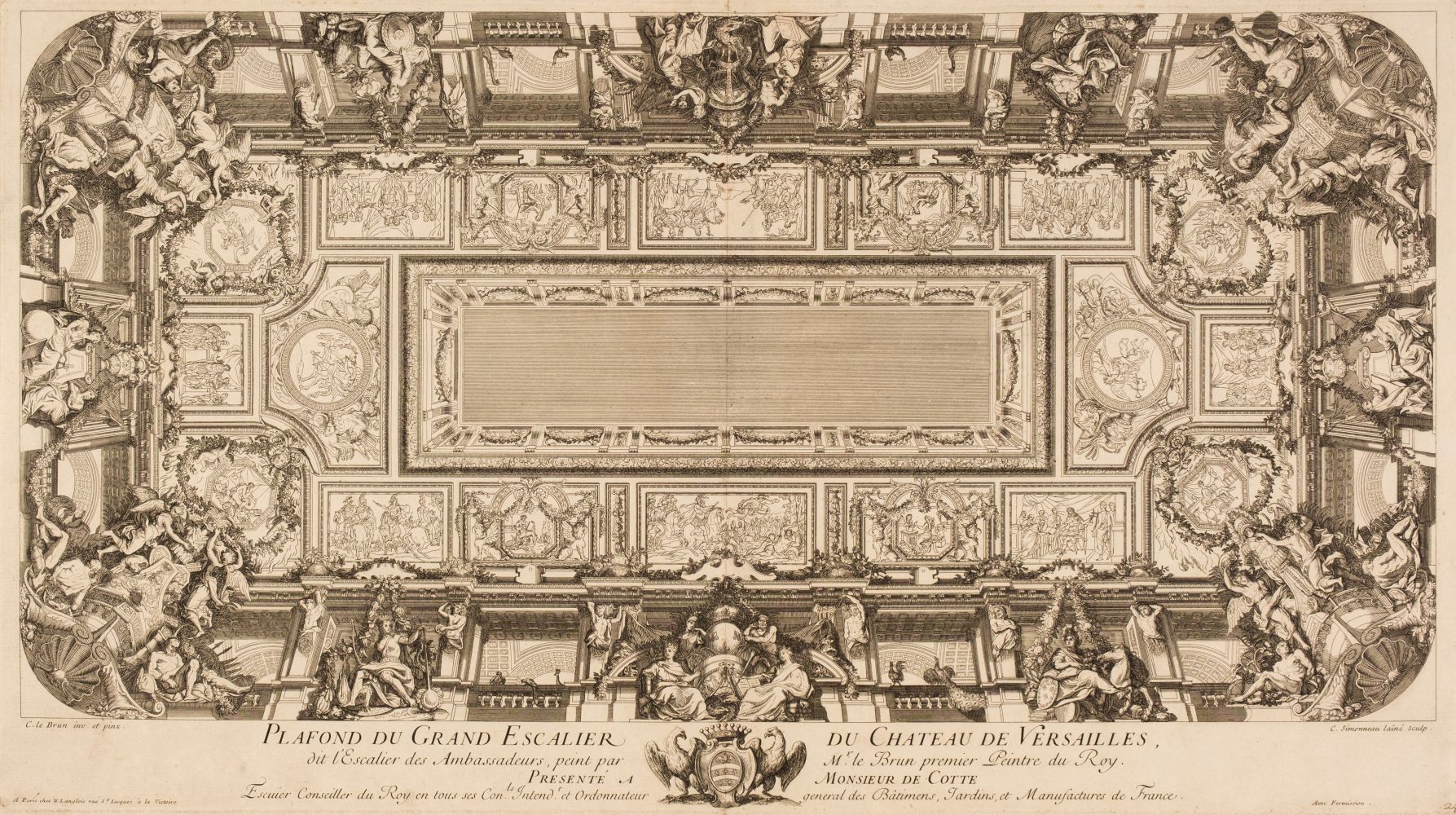Le Brun, Charles — [Louis-Marie-Joseph Morel d'Arleux]Dissertation sur un traité de Charles le Brun concernant le rapport de la physionomie humaine avec celle des animaux. Paris: printed by L.P. Dubray for the 'Calcographie du Musée Napoléon', 1806 Folio (652 x 498 mm). Engraved portrait of Le Brun by G. Edelinck after N. de Largilliere, 37 engraved plates after Le Brun, 11 of which in line only by Baltard, and 26 in line and roulette by Andre Le Grand; some foxing and dampstaining, old repairs in margins of a few plates. Later half calf and marbled paper-covered boards, uncut; boards detached. The first edition of a remarkable work Through a series of compelling images, Le Brun illustrates his supposition that human character traits can be read by examining an individual and deciding which animal's head their face most resembles. The dissertation is by Louis-Marie-Joseph Morel d'Arleux, who was curator of the "Cabinet des dessins du Louvre" from 1797 to 1827. Morel notes that Le Brun gave a lecture on his theory at a meeting of the Academie de Peinture in Paris on 28 March 1671. The lecture was illustrated by the drawings from which the engravings in the present work are taken. Unfortunately, although the drawings survived, all trace of what Le Brun said was subsequently lost, and the details of his theory only survived through second-hand reports, or later works that reinterpreted what he had said. In the present work Morel attempts to reconstruct Le Brun's original theory, which he presents in four parts, and illustrates with a selection of engraved plates after Le Brun's original drawings. The most striking images are the final 21 plates where human heads with the characteristics of various animals are placed next to the animals they most resemble: these include an eagle, donkey, sheep, cow, camel, cat, owl, horse, goat, etc. The early 19th-century reader's interest in this work would have been fueled by the contemporary pseudo-scientific fields of physiognomy and phrenology, but to the modern eye the images recall the work of 20th century surrealists. REFERENCESorensen, De la physionomie humaine et animale... (Paris: Réunion des musées nationaux, 2000)Condition reportCondition as described in catalogue entry. The lot is sold in the condition it is in at the time of sale. The
Le Brun, Charles — [Louis-Marie-Joseph Morel d'Arleux]Dissertation sur un traité de Charles le Brun concernant le rapport de la physionomie humaine avec celle des animaux. Paris: printed by L.P. Dubray for the 'Calcographie du Musée Napoléon', 1806 Folio (652 x 498 mm). Engraved portrait of Le Brun by G. Edelinck after N. de Largilliere, 37 engraved plates after Le Brun, 11 of which in line only by Baltard, and 26 in line and roulette by Andre Le Grand; some foxing and dampstaining, old repairs in margins of a few plates. Later half calf and marbled paper-covered boards, uncut; boards detached. The first edition of a remarkable work Through a series of compelling images, Le Brun illustrates his supposition that human character traits can be read by examining an individual and deciding which animal's head their face most resembles. The dissertation is by Louis-Marie-Joseph Morel d'Arleux, who was curator of the "Cabinet des dessins du Louvre" from 1797 to 1827. Morel notes that Le Brun gave a lecture on his theory at a meeting of the Academie de Peinture in Paris on 28 March 1671. The lecture was illustrated by the drawings from which the engravings in the present work are taken. Unfortunately, although the drawings survived, all trace of what Le Brun said was subsequently lost, and the details of his theory only survived through second-hand reports, or later works that reinterpreted what he had said. In the present work Morel attempts to reconstruct Le Brun's original theory, which he presents in four parts, and illustrates with a selection of engraved plates after Le Brun's original drawings. The most striking images are the final 21 plates where human heads with the characteristics of various animals are placed next to the animals they most resemble: these include an eagle, donkey, sheep, cow, camel, cat, owl, horse, goat, etc. The early 19th-century reader's interest in this work would have been fueled by the contemporary pseudo-scientific fields of physiognomy and phrenology, but to the modern eye the images recall the work of 20th century surrealists. REFERENCESorensen, De la physionomie humaine et animale... (Paris: Réunion des musées nationaux, 2000)Condition reportCondition as described in catalogue entry. The lot is sold in the condition it is in at the time of sale. The













Testen Sie LotSearch und seine Premium-Features 7 Tage - ohne Kosten!
Lassen Sie sich automatisch über neue Objekte in kommenden Auktionen benachrichtigen.
Suchauftrag anlegen